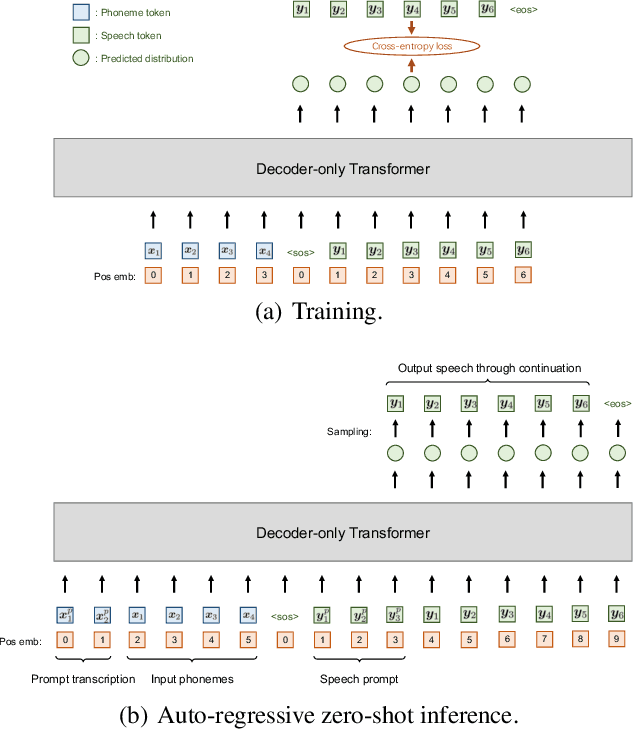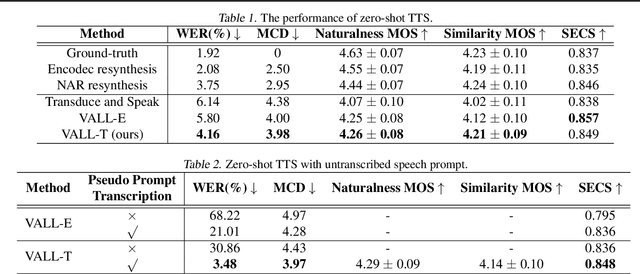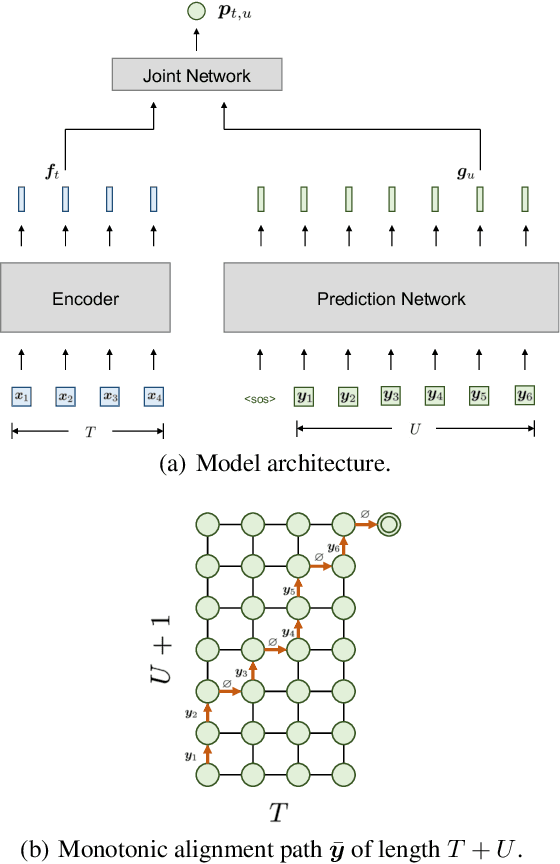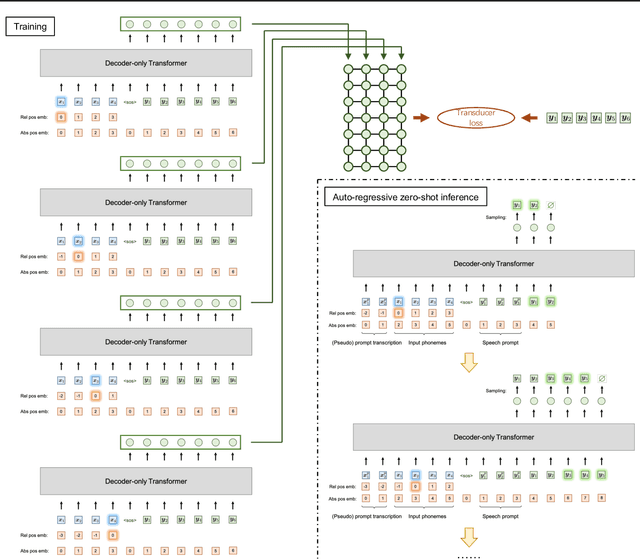VALL-T: Decoder-Only Generative Transducer for Robust and Decoding-Controllable Text-to-Speech
Paper and Code
Jan 30, 2024



Recent TTS models with decoder-only Transformer architecture, such as SPEAR-TTS and VALL-E, achieve impressive naturalness and demonstrate the ability for zero-shot adaptation given a speech prompt. However, such decoder-only TTS models lack monotonic alignment constraints, sometimes leading to hallucination issues such as mispronunciation, word skipping and repeating. To address this limitation, we propose VALL-T, a generative Transducer model that introduces shifting relative position embeddings for input phoneme sequence, explicitly indicating the monotonic generation process while maintaining the architecture of decoder-only Transformer. Consequently, VALL-T retains the capability of prompt-based zero-shot adaptation and demonstrates better robustness against hallucinations with a relative reduction of 28.3% in the word error rate. Furthermore, the controllability of alignment in VALL-T during decoding facilitates the use of untranscribed speech prompts, even in unknown languages. It also enables the synthesis of lengthy speech by utilizing an aligned context window.
 Add to Chrome
Add to Chrome Add to Firefox
Add to Firefox Add to Edge
Add to Edge